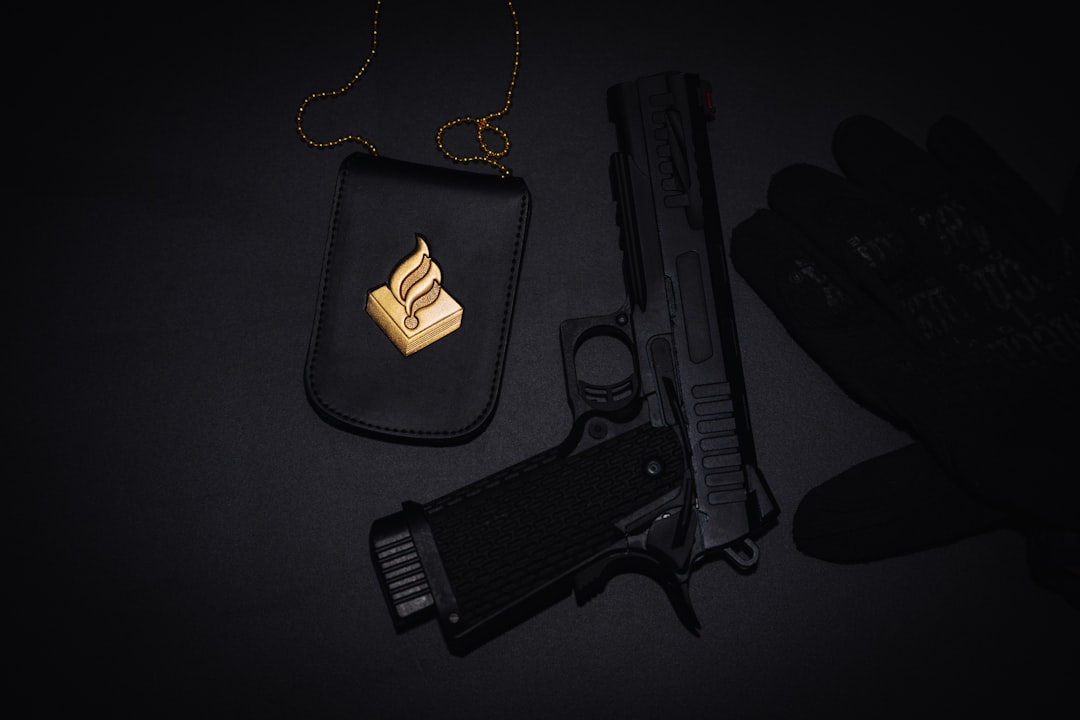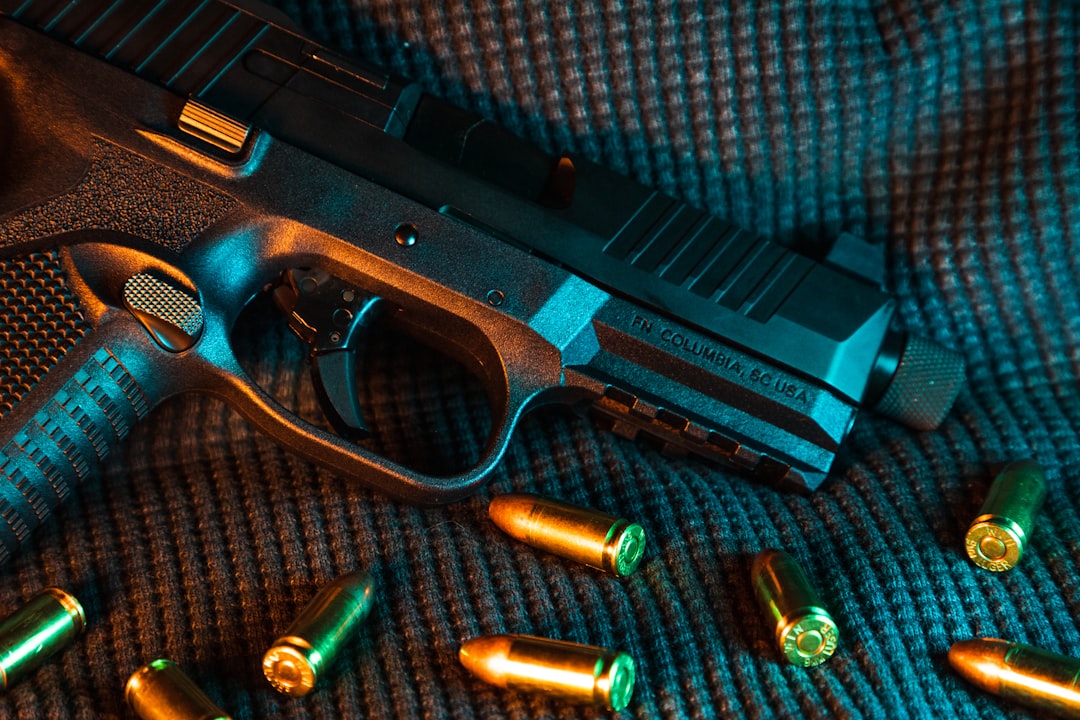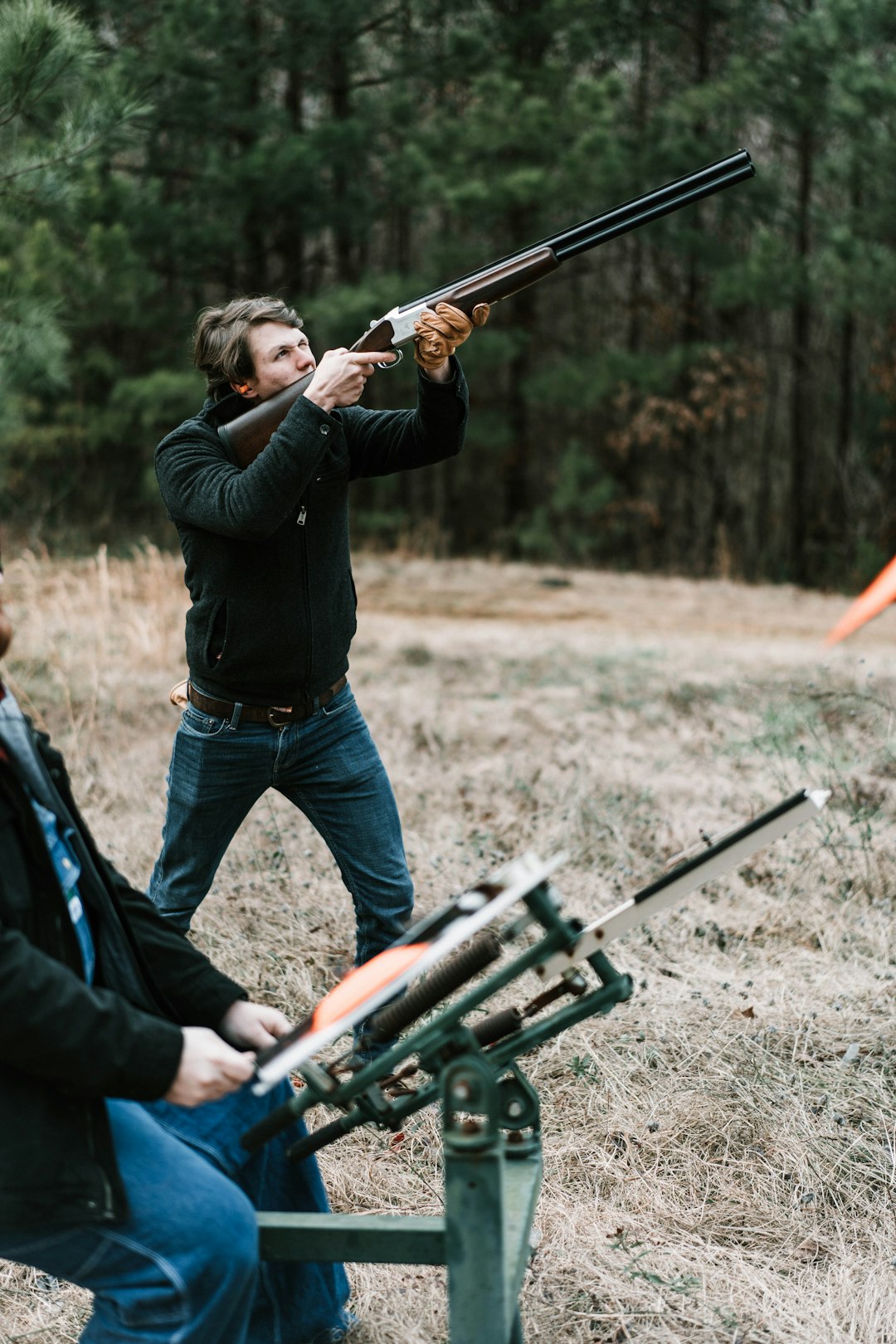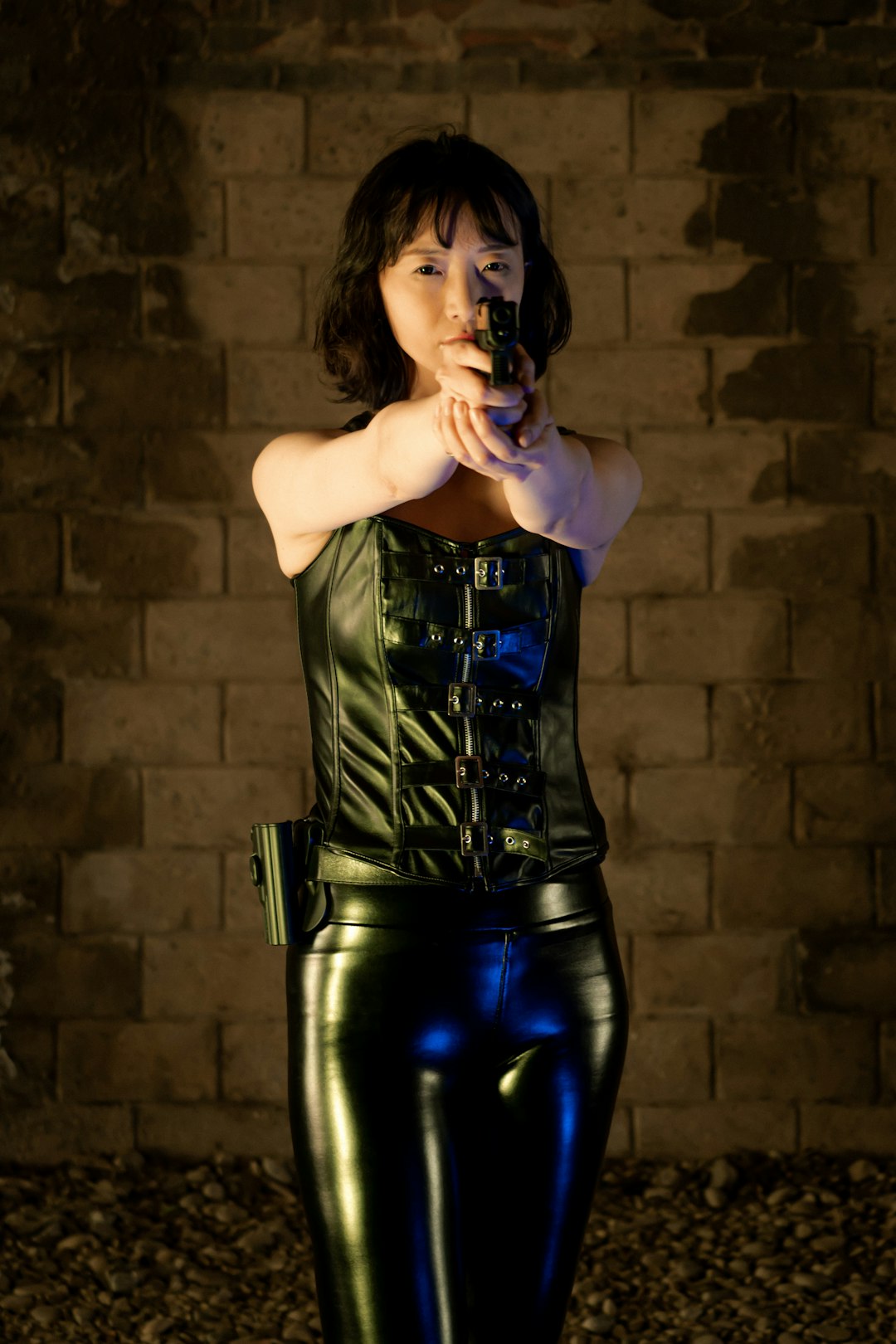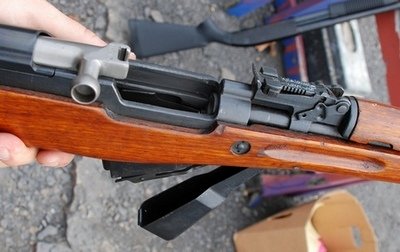In order to handle a gun safely, it is important to practice trigger discipline.
This means keeping your finger outside of the trigger guard until you are ready to fire.
Many people think that this is difficult or unnecessary, but it is one of the four universal rules of safe gun handling.
In this article, we will discuss what trigger discipline is and why it is so important.
Check Out: What Are The Two Basic Styles of Firearm Actions?
Table of Contents
Toggle- What Exactly is Trigger Discipline?
- What are some Proper Trigger Disciplines?
- What should I know About Trigger Pull & Follow Through For Beginners?
- The 3 Trigger Pull Stages
- how to Fix Your Trigger Pull?
- Common Trigger Pull Mistakes
- 4 ways to correct trigger pull errors
- 1. Identify the types of trigger pull errors
- 2. Understand the causes of trigger pull errors
- 3. Correct trigger pull errors using proper techniques
- 4. Practice, practice, practice!
- FAQ About Trigger Discipline
What Exactly is Trigger Discipline?
Trigger discipline is a term used to describe the proper handling of a firearm. In basic terms, it means keeping your finger off the trigger until you are ready to shoot.
This is a critical safety rule that everyone who owns or uses a gun should Follow. There are several reasons why trigger discipline is so important.
First, it helps to prevent accidental discharge. If your finger is not on the trigger, it is much less likely that the gun will fire accidentally.
Second, it helps to improve accuracy. When you keep your finger off the trigger until you are ready to shoot, you can take a more deliberate aim and are less likely to jerky movements that can affect accuracy.
Finally, trigger discipline helps to promote safe gun handling in general. By following this rule, you are less likely to handle firearms in an unsafe manner.
Also Read: What should you check before choosing a firearm for hunting
What are some Proper Trigger Disciplines?
Many people are surprised to learn that there is more to trigger discipline than simply keeping your finger off the trigger until you’re ready to shoot.
In fact, the go-to technique for most shooters is to extend and rest your trigger finger against the frame of the firearm.
This technique has several advantages. First, it makes it much more difficult for a series of events to happen where you accidentally shoot someone or something.
Second, it helps to keep your finger from getting tired or slipping off the trigger, which can lead to an inaccurate shot.
Finally, it keeps your finger in a position where you can quickly and easily access the trigger when you’re ready to shoot.
Read: Why Do Police Touch Your Car When Pulled Over?
What should I know About Trigger Pull & Follow Through For Beginners?
As a beginner, it is essential to understand trigger pull and follow through. The trigger is the part of the gun that you squeeze to release the bullet.
The follow through is the movement of your hand after the bullet has been released. Both trigger pull and follow through are important for accuracy.
To ensure accuracy, it is important to maintain a steady grip on the gun and to keep your hand steady as you squeeze the trigger.
It is also important to practice trigger control by squeezing the trigger slowly and evenly. With practice, you will develop muscle memory and be able to control the trigger with precision.
By understanding and practicing trigger control, you will be able to shoot with accuracy and confidence.
Watch the video for follow through and recoil management Tips
Below is a video that provides some great tips for trigger control and follow through.
The 3 Trigger Pull Stages
The trigger is an essential part of any gun, and it is important to understand the mechanics of how it works. There are four distinct points in the trigger process: cocking, aiming, firing, and resetting.
Initial Slack
The act of pulling a trigger is often broken down into stages in order to help shooters more effectively and efficiently engage their targets.
The first stage of the trigger pull is known as the initial slack, which is the distance the trigger must travel before it reaches the point where it will break.
This stage can be further divided into two sub-stages: take-up and creep. Take-up is the distance the trigger travels before it reaches the point of resistance, while creep is the distance traveled after that point before the shot breaks.
Understanding these stages can help shooters identify and correct issues with their trigger pull, ultimately leading to improved accuracy and precision.
Read: Indiana Constitutional Carry: What You Need To Know
Trigger Breaks
While there are a variety of trigger pull stages, the trigger break is arguably the most important. This is because it’s the moment when the gun actually fires.
To ensure a smooth trigger break, it’s important to keep your finger positioned on the trigger in line with the frame.
This will help to prevent the gun from moving off target when you pull the trigger. In addition, it’s important to apply even pressure to the trigger.
This will help to ensure a consistent shot and will help to prevent the gun from firing at an unexpected moment.
Resetting the Trigger
Once the trigger has been pulled and the shot has been fired, it’s important to reset the trigger. This can be done by simply letting go of the trigger and allowing it to return to its original position.
It’s important to note that you should only reset the trigger when you’re ready to fire again. If you reset the trigger before you’re ready to shoot, you may inadvertently move the gun off target.
By understanding and following these steps, you can ensure that you have proper trigger discipline and are able to effectively and safely use your gun.
how to Fix Your Trigger Pull?
A poor trigger pull can result in a number of accuracy problems, including muzzle lift, poor shot placement, and flinching.
In order to fix these issues, it is important to identify the source of the problem. First, check to see if the trigger itself is the issue.
If the trigger is too light or too heavy, it can throw off your aim. Second, take a look at your grip. If you are gripping the gun too tightly, it can affect your trigger pull.
Finally, make sure that you are using the proper stance. A good stance will help you to control the gun and maintain a steady aim.
Common Trigger Pull Mistakes
jerking the trigger
One of the most common mistakes made when shooting a gun is jerking the trigger. This can cause the bullet to veer off course, missing the target entirely.
Even if the bullet hits the target, the shot will be less accurate than if the trigger had been pulled smoothly.
Jerking the trigger can also cause a condition known as “trigger freeze.” This is when the shooter’s finger freezes up on the trigger, making it impossible to fire the gun.
To avoid these problems, it is important to practice smooth, even trigger pulling. With a little practice, anyone can learn to shoot with greater accuracy and avoid trigger freeze.
Anticipation of the recoil
Anticipation of the recoil is a very common trigger control mistake. When the gun fires, the natural reaction is to flinch in anticipation of the recoil.
This movement disrupts the alignment of the sights and causes the shot to go high and to the right (for right-handed shooters).
The best way to overcome this problem is to focus on the front sight and press the trigger while maintaining that focus.
With practice, it will become easier to keep the front sight in focus while also pressing the trigger smoothly.
Another helpful tip is to practice dry-firing at home without any ammunition.
This will help you get a feel for the trigger without having to worry about the recoil. With a little bit of practice, you should be able to overcome this common trigger control mistake.
poor follow through
Poor follow through is a common mistake made when shooting a firearm. When the trigger is pulled, the gun will recoil and move slightly off target.
In order to hit the intended target, it is important to keep the sights on the target and maintain a steady hold on the gun even after the shot has been fired.
This can be difficult to do, particularly if the gun is large or heavy, but it is essential for accuracy.
Many shooters fail to properly follow through, resulting in shots that are off-target and often wild.
By taking the time to practice and master this technique, shooters can dramatically improve their accuracy and precision.
poor hand placement
One of the most common mistakes made by shooters is poor hand placement on the firearm trigger.
This can result in the shooter’s finger being positioned too high on the trigger, making it more likely that the shot will be inaccurate.
In addition, poor hand placement can also cause the shooter’s finger to slip off the trigger, resulting in a dangerous misfire.
To avoid these problems, it is important to make sure that your trigger finger is positioned properly before taking a shot.
The best way to do this is to place your finger on the trigger so that it is resting gently against the side of the barrel.
This will help to ensure that your finger is in the right position for a accurate and safe shot.
Poor sight alignment
Proper sight alignment is key to accurate shooting, yet it’s one of the most common mistakes shooters make.
The front and rear sights on a typical firearm are not aligned in the center of the gun.
Instead, they’re offset so that when they’re correctly aligned, the point of impact will be slightly to the left of the point of aim.
This is called “canting.” When a shooter cants the gun, either intentionally or unintentionally, the point of impact will be shifted to the left or right of the point of aim.
This can be a major source of inaccuracy, especially at long range.
Luckily, it’s easy to avoid this mistake by simply paying attention to your sights and making sure they’re properly aligned before you take each shot. With a little practice, you’ll be able to shoot with precision in no time.
Watch Video on Developing a smooth, steady trigger pull
Below watch a video on developing a smooth, steady trigger pull. Remember to keep your finger outside of the trigger guard until you’re ready to shoot.
4 ways to correct trigger pull errors
Below are four ways to correct trigger pull errors.
1. Identify the types of trigger pull errors
Identify the types of trigger pull errors that can occur while shooting. There are three main types of trigger pull errors: jerking the trigger, squeezing the trigger too hard, and anticipation.
Jerk firing
Jerk firing is when the shooter tries to fire the gun too quickly and ends up yanking or pulling the trigger instead of smoothly pressing it.
This often results in the gun firing before the sights are properly aligned, leading to a wild shot.
Squeezing the trigger
Squeezing the trigger too hard is when the shooter applies too much pressure to the trigger, resulting in a loss of accuracy.
The ideal amount of pressure needed to fire a gun is just enough to break the trigger sear without disturbing the alignment of the sights.
Anticipation
Anticipation is when the shooter tenses up in anticipation of the gun firing, often resulting in a flinch. This can be caused by fear, excitement, or simply not knowing how to handle the recoil of the gun.
All of these trigger pull errors can be corrected with practice and proper instruction.
2. Understand the causes of trigger pull errors
There are many factors that can contribute to trigger pull errors. Some of the most common causes include: anxiety, poor posture, improper grip, and incorrect finger placement on the trigger.
Anxiety is one of the most common causes of trigger pull errors. When we are anxious, our body goes into fight-or-flight mode and we start to tense up. This can lead to a jerky trigger pull or an anticipatory flinch.
Poor posture is another common cause of trigger pull errors. When we are not in a proper shooting stance, it is difficult to maintain control of the gun. This can lead to squeezing the trigger too hard or jerking the trigger.
Improper grip is another factor that can contribute to trigger pull errors. If we are not gripping the gun correctly, it is difficult to maintain control of the gun. This can lead to squeezing the trigger too hard or jerking the trigger.
Incorrect finger placement on the trigger is another common cause of trigger pull errors. If our finger is not placed correctly on the trigger, it is difficult to maintain control of the gun. This can lead to squeezing the trigger too hard or jerking the trigger.
3. Correct trigger pull errors using proper techniques
There are many techniques that can be used to correct trigger pull errors. Some of the most common techniques include: dry fire practice, live fire practice, and trigger reset drills.
Dry fire practice is a great way to correct trigger pull errors. This is when you practice pulling the trigger without actually firing the gun. This allows you to focus on your trigger pull and get a feel for the correct amount of pressure needed to break the trigger sear.
Live fire practice is another great way to correct trigger pull errors. This is when you actually shoot the gun at a target. This allows you to get feedback on yourtrigger pull and make any necessary adjustments.
Trigger reset drills are another great way to correct trigger pull errors. This is when you practice resetting the trigger after each shot. This helps you to get a feel for the proper amount of pressure needed to break the trigger sear and also helps to prevent anticipation.
4. Practice, practice, practice!
The best way to correct trigger pull errors is to practice, practice, practice! The more you practice, the more comfortable you will become with your gun and the proper techniques for safe gun handling.
Remember to always follow the four universal rules of safe gun handling: keep your finger off the trigger until ready to fire, always point the gun in a safe direction, keep the gun unloaded until ready to use, and know your target and what is beyond it.
FAQ About Trigger Discipline
Below are some frequently asked questions about trigger discipline:
Q: What is the best way to practice trigger discipline?
A: The best way to practice trigger discipline is to dry fire the gun, live fire the gun, and reset the trigger after each shot.
Q: What are some of the most common causes of trigger pull errors?
A: The most common cause of trigger pull errors is improper grip. Other causes can include poor trigger control, environmental factors, and user error.
Q: How can I improve my trigger discipline?
A: Practice makes perfect! The best way to improve your trigger discipline is to practice dry firing and live fire exercises.
Pay attention to your grip and trigger control, and try to keep your finger outside of the trigger guard area until you are ready to shoot.
Q: What are the consequences of poor trigger discipline?
A: Poor trigger discipline can lead to accidental discharge of the firearm, which can result in serious injury or death. It is important to always follow the four universal rules of gun safety, and trigger discipline is one of those rules.
Q: What are the four universal rules of gun safety?
A: The four universal rules of gun safety are: always point the gun in a safe direction; always keep your finger off the trigger until you are ready to shoot; always keep the gun unloaded until you are ready to use it; and know your target and what is beyond it.
Q: What is the most important rule of gun safety?
A: The most important rule of gun safety is to always keep the gun pointed in a safe direction. This means that you should never point the gun at anything that you do not want to shoot. Always keep the gun pointed in a safe direction, even when you are not using it.
Q: Can a gun range help improve my trigger discipline?
A: Yes, gun ranges can help improve your trigger discipline by providing a safe and controlled environment to practice in.
You can also take classes at a gun range to learn more about gun safety and how to properly handle a firearm.
Q: What are some tips for improving trigger discipline?
A: Some tips for improving trigger discipline include: practicing dry fire exercises, paying attention to your grip and trigger control, and keeping your finger outside of the trigger guard area until you are ready to shoot.
Always follow the four universal rules of gun safety, and if you are unsure about something, ask a certified instructor for help.
